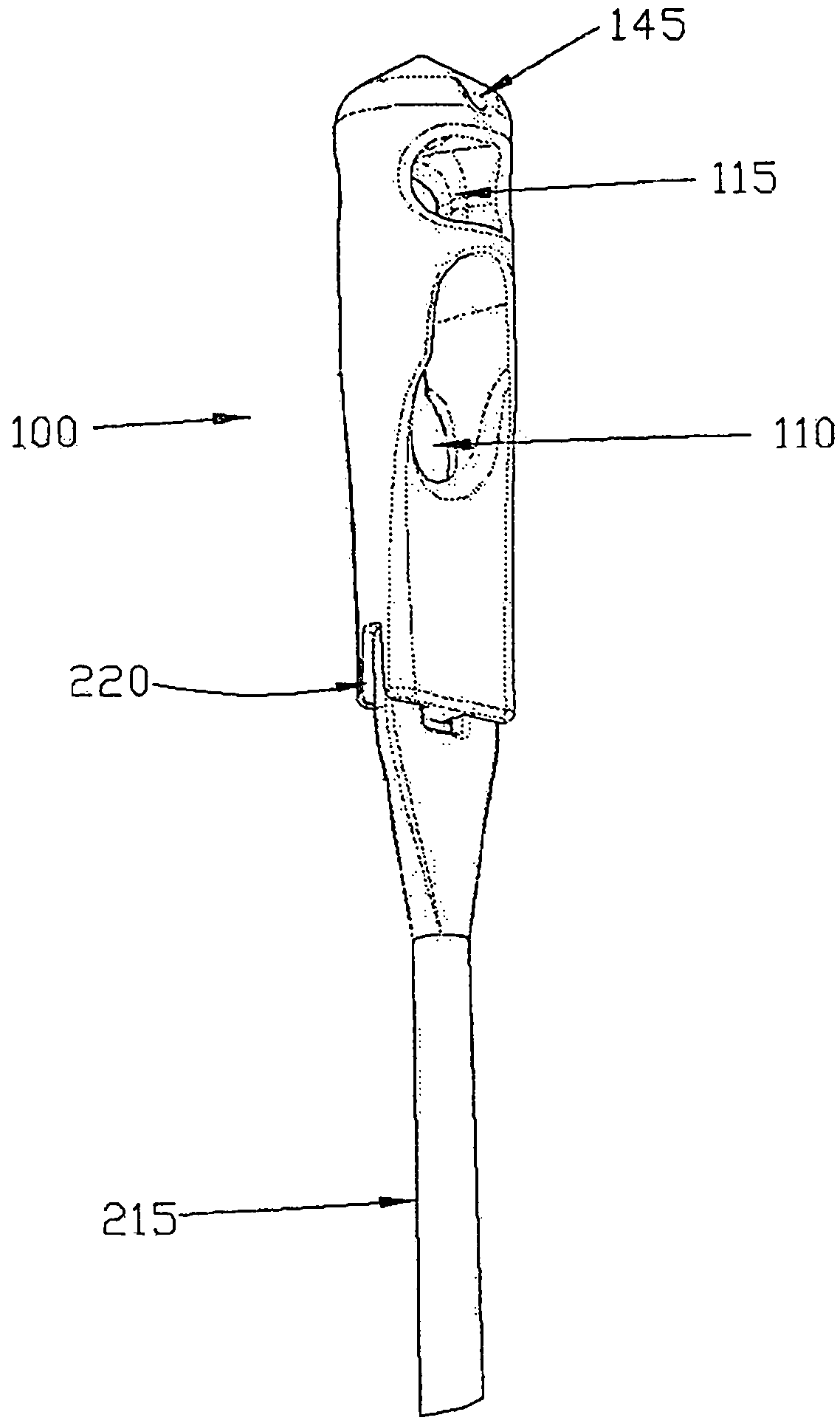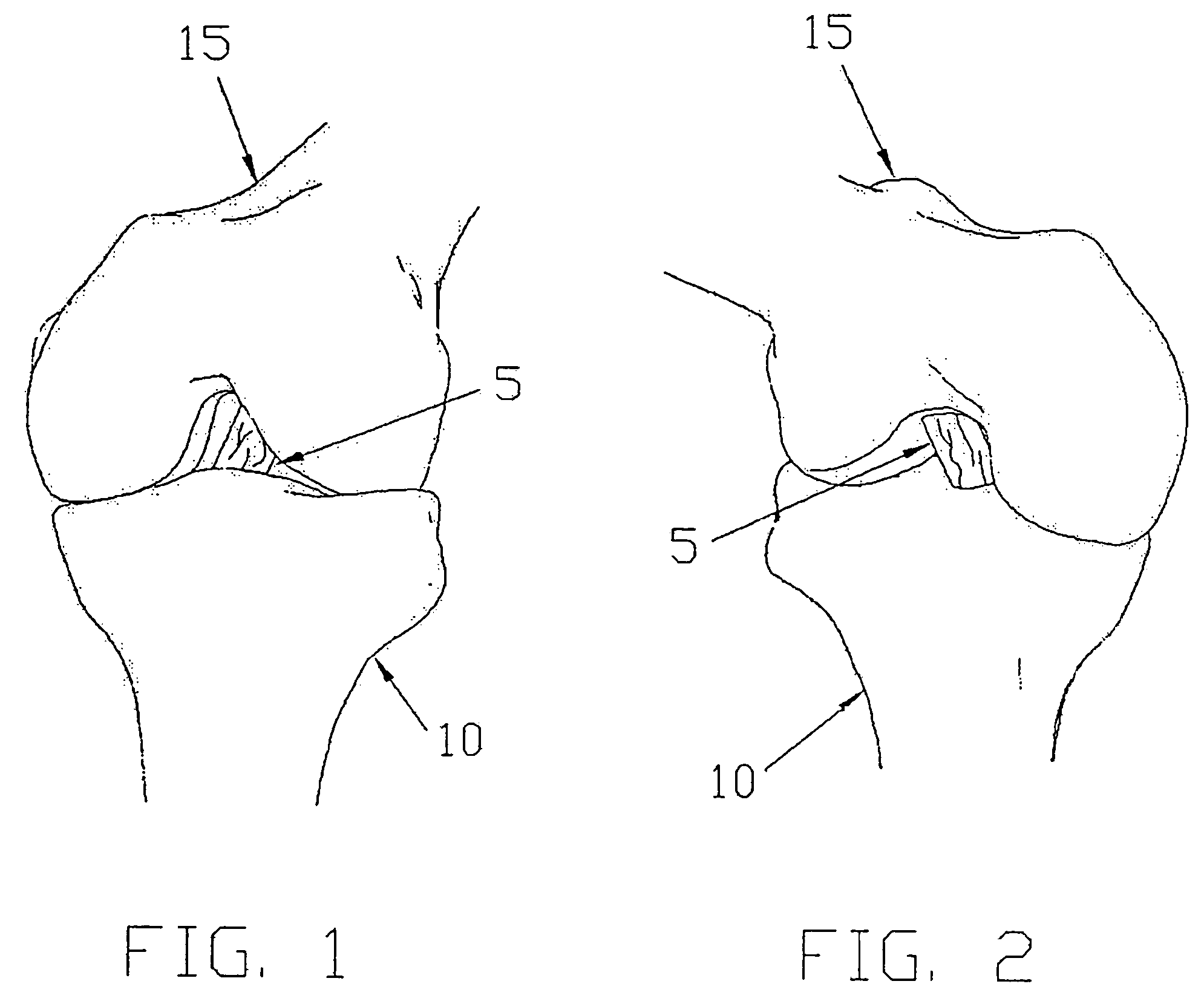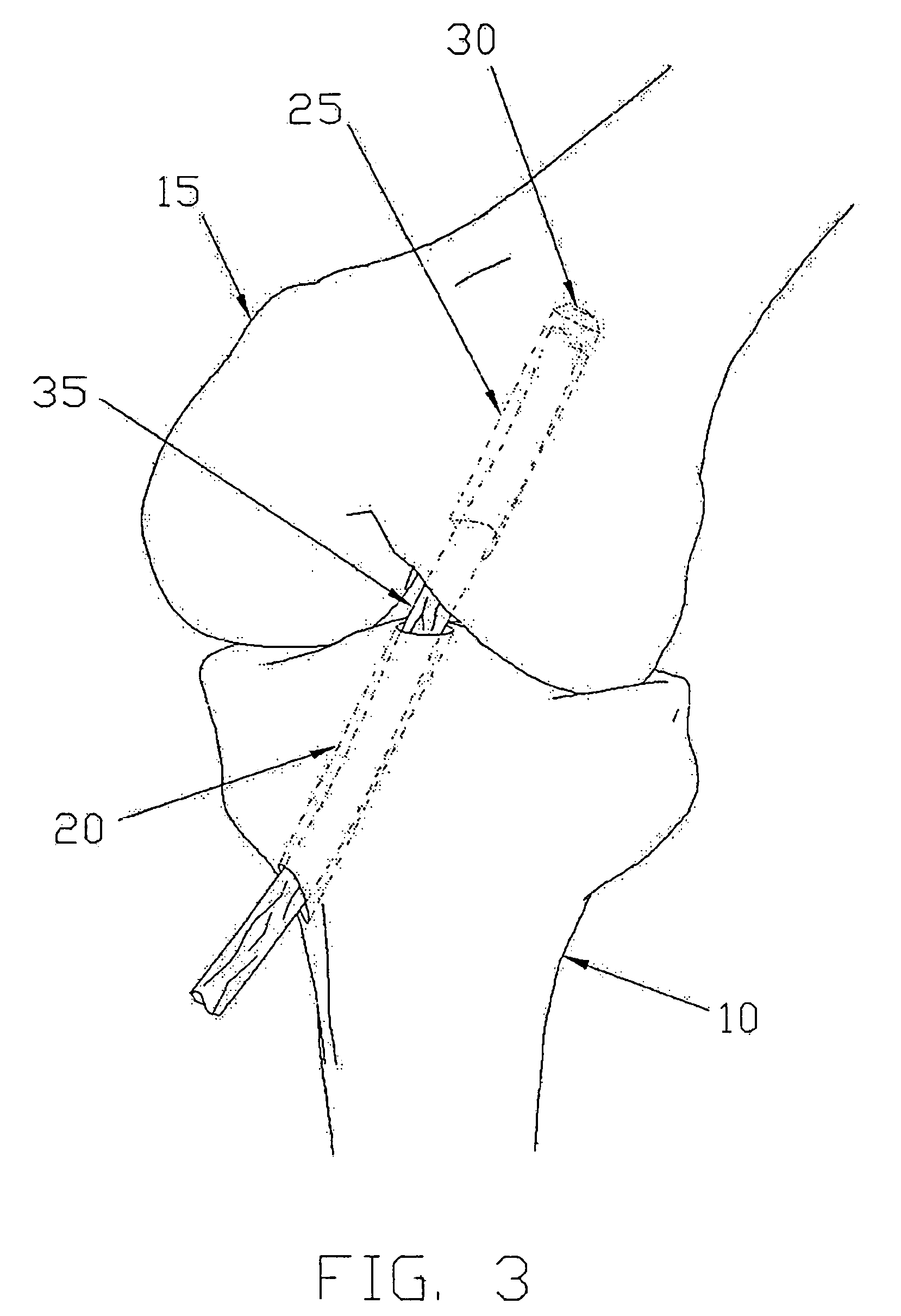Apparatus and method for reconstructing a ligament
a technology of ligaments and surgical equipment, applied in the field of surgical equipment and procedures, can solve the problems of affecting the normal movement of the joint,
- Summary
- Abstract
- Description
- Claims
- Application Information
AI Technical Summary
Benefits of technology
Problems solved by technology
Method used
Image
Examples
Embodiment Construction
[0177]Looking next at FIG. 8, there is shown a graft ligament support block 100 which comprises one preferred form of the invention. Graft ligament support block 100 comprises a body 105, and a graft hole 110 and a transverse fixation pin hole 115 extending through body 105, with both graft hole 110 and transverse fixation pin hole 115 preferably extending substantially perpendicular to the longitudinal axis 120 of body 105. In one preferred form of the invention, graft hole 110 and transverse fixation pin hole 115 extend diametrically across body 105, with graft hole 110 and transverse fixation pin hole 115 extending substantially parallel to one another. Preferably graft hole 110 resides closer to the proximal end 125 of body 105 than transverse fixation pin hole 115, and transverse fixation pin hole 115 resides closer to the distal end 130 of body 105 than graft hole 110. In one preferred form of the invention, the distal end of body 105 has a circular cross-section, although it ...
PUM
 Login to View More
Login to View More Abstract
Description
Claims
Application Information
 Login to View More
Login to View More - R&D
- Intellectual Property
- Life Sciences
- Materials
- Tech Scout
- Unparalleled Data Quality
- Higher Quality Content
- 60% Fewer Hallucinations
Browse by: Latest US Patents, China's latest patents, Technical Efficacy Thesaurus, Application Domain, Technology Topic, Popular Technical Reports.
© 2025 PatSnap. All rights reserved.Legal|Privacy policy|Modern Slavery Act Transparency Statement|Sitemap|About US| Contact US: help@patsnap.com



